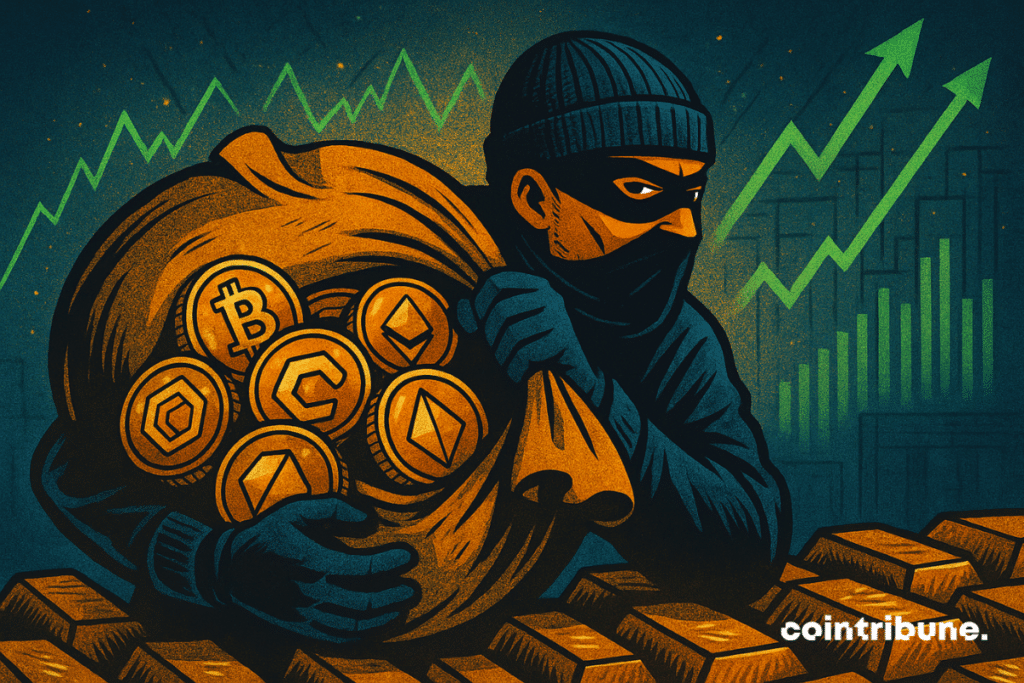Binance Teams Up With Tron and Tether in Global Fight Against Crypto Crime
Binance joins the T3 Financial Crime Unit, a coalition between Tron, Tether, and TRM Labs, as its first T3+ partner, aiming to combat an increasingly fast-paced wave of crypto hacks. Since launching in September 2024, the unit has frozen more than $250 million in illicit crypto assets, more than double the $100 million reported in its first six months. The group works alongside law enforcement agencies worldwide to disrupt money laundering, investment fraud, blackmail, terrorism financing, and other blockchain-based crimes.

In Brief
- The T3 Financial Crime Unit has frozen over $250 million in illicit crypto since its 2024 launch and is now expanding with Binance as its first T3+ partner.
- New data from Global Ledger shows crypto hacks are becoming faster and harder to stop, with some funds laundered in under three minutes and only 4.2% of stolen assets recovered in H1 2025.
- The expansion raises debate over the power of centralized entities like stablecoin issuers to freeze funds, balancing security with decentralization principles.
Binance joins as first T3+ partner
The new T3+ program enlists major exchanges, financial institutions, and industry players to share intelligence and respond to threats in real time. Binance’s participation marks the first expansion of the unit beyond its founding members.
Tron founder Justin Sun is excited about Binance joining the efforts, and said the move will expand “the scope of collaboration across the blockchain industry to better address illicit activity in real time.” The partnership is expected to strengthen the group’s ability to intercept suspicious transactions before they are laundered.
Crypto hacks are getting faster
A new report from Swiss blockchain analytics firm Global Ledger emphasizes the urgency of the initiative. In the first half of 2025, over $3 billion in crypto was stolen, with hackers moving funds at unprecedented speed.
Some attacks saw laundering completed in under three minutes, and more than 30% of stolen assets were moved within 24 hours. On average, it took just 15 hours for stolen funds to be laundered, and in 23% of cases, the assets were gone before the breach was even disclosed.
As a result, only 4.2% of stolen funds were recovered in the first half of the year. Centralized exchanges, where about 15% of illicit funds pass through, often have just 10–15 minutes to block suspicious transfers before they disappear.
Debate over stablecoin issuers’ power
The T3 FCU’s success hinges partly on the ability of centralized actors to halt transactions. Last month, Tether froze nearly $86,000 in stolen USDT, reigniting debate over the balance between security and decentralization, possibly speeding up the effort to bring in Binance.
Critics argue that giving issuers the power to freeze funds undermines user sovereignty and the principles of decentralized finance. Supporters say such measures are vital to protect users and prevent large-scale thefts.
Tether CEO Paolo Ardoino defended the practice, stating:
Bad actors have nowhere to hide on the blockchain… and it’s only through collective effort that we can build a safer, more trusted environment for users worldwide.
A growing global effort
With Binance’s entry into the T3+ program and increasing collaboration between blockchain projects, exchanges, and analytics firms, the fight against crypto crime is becoming more coordinated. Yet, as hackers grow faster and more sophisticated, the industry faces a race against time to safeguard assets and maintain trust in the digital economy.
Maximize your Cointribune experience with our "Read to Earn" program! For every article you read, earn points and access exclusive rewards. Sign up now and start earning benefits.
I've been passionate about crypto for nearly a decade, ever since I was young and first became curious about investing. That early spark led me to years of research, writing, and exploring the future of decentralized tech.
The views, thoughts, and opinions expressed in this article belong solely to the author, and should not be taken as investment advice. Do your own research before taking any investment decisions.